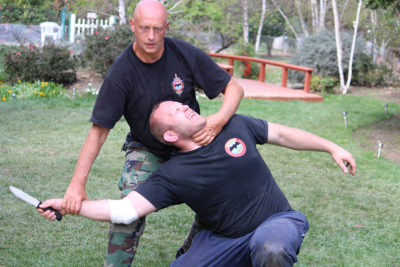We also acknowledge previous National Science Foundation support under grant numbers 1246120, 1525057, and 1413739. A) HCI + NaOH E) BH3 + H2O B) CH3COOH + H20 I C) + H2SO4 F) MgCl2 + NH D) + NaOH 2. This now acts as a nucleophile and targets alkyl halides to add onto an alkyne. write the equation for the reaction of water with an alkyne in the presence of sulfuric acid and mercury(II) sulfate. Here we're going to hydrogenate an alkyne to form an alkene. Today’s reagent is a staple of Org 1 and the key representative of a genuinely useful process being used every day in laboratories worldwide. With the addition of water, alkynes can be hydrated to form enols that spontaneously tautomerize to ketones. addition of BH3 followed by H2O2 adds H and OH "anti-Markovnikov" addition completely syn addition consider B as the electrophile that adds first to the pi bond addition of B and H is concerted (simultaneous Reduction of Alkenes. Structure Ce sont des hydrocarbures de formule générale C nH2n. I don't quite understand what exactly happens after the hydroboration part. The reaction starts with the hydroboration of the alkene followed by the oxidation with hydrogen peroxide and sodium hydroxide: Just like for the alkenes, the OH group is placed on the less substituted carbon. BH3, THF, HO 2. write an equation for the reaction of an alkyne with borane. So two are alkyne. For internal alkynes ( the triple-bond is within a longer chain ) the addition of water is not regioselective. ChEBI. Reduction: Alkyne + H2, Pd/BaS04 (Lindlar's catalyst) Alkyne + Na, NH3 Addition: Alkyne + Br2 or 2Br2 Free Radcal Addtion of X Alkyne + B2H6/CH3COOH (non terminal) Alkyne + R2BH/H2O2 OH- (terminal) Alkyne + hot KMnO4, H Alkyne + O3/H20 (terminal?) 8 Handouts 3 Summary of Mechanisms, Ch. This reaction yields exactly the same product that would be obtained from hydrogenation by the Lindlar method. If the very strong base sodium amide is used, the terminal alkyne is trapped as its sodium salt, from which it may be released by mild acid treatment. For terminal alkynes the addition of water follows the Markovnikov rule, as in the second example below, and the final product ia a methyl ketone ( except for acetylene, shown in the first example ). 0 0. kochan. if R & R' in the third equation are not the same ) two isomeric ketones will be formed. Here's the hydroboration-oxidation of alkyne reaction. The most commonly-used notation for straight-chain molecules in organic chemistry is the Wedge-Dash Notation.This was also the main type of structure used in the Definitions section of this tutorial. Describe the products of the following alkene reactions and if they are MK/AMK or syn/anti additions. Legal. H,02 HgSO4, H,SO HO 3 1) Hg(OAC)2, H20 ~ 2) NaBHA 1) BHU 2) H2O2. On peut les représenter de deux façons différentes : deux liaisons à l’arrière et deux à l’avant, ou tout dans le même The reagents are listed alphabetically, followed by brief descriptions of the uses of each. The equilibrium between tautomers is not only rapid under normal conditions, but it often strongly favors one of the isomers ( acetone, for example, is 99.999% keto tautomer ). 4 years ago. Are you sure it’s CH3COOH and not CH3COOOH (a … And on the other side of our triple bond, let's say there's some R group attached to this carbon. Tautomeric equilibria are catalyzed by traces of acids or bases that are generally present in most chemical samples. addition of 2 OH's across C=C syn addition. The pKa values for organic acids can be found in Other articles where Alkyne is discussed: hydrocarbon: Alkenes and alkynes: Alkenes (also called olefins) and alkynes (also called acetylenes) belong to the class of unsaturated aliphatic hydrocarbons. 1 HrB r (no peroxides) Br H H HBr H H + Br B Even in such one-sided equilibria, evidence for the presence of the minor tautomer comes from the chemical behavior of the compound. 1) O3 2) Oxidation (H2O2) cleaves C=C into two carbonyls vinyl hydrogens are lost to give carboxylic acid products (OH instead of vinyl H) H2 and Lindlar Catalyst. In the hydroboration reactions of alkenes I've seen so far, they were always followed by oxidation with $\ce{H2O2/NaOH}$ (to yield alcohols).. Today I found a peculiar reaction in which acetic acid-d 1 was added after hydroboration to give a deuterated product:. Question: Reactions Of Alkynes NaNH2 Br H2, Pd *may Also Use H/Ni Or Hp/Pt 1) LI, ENH2 2) NHACI Hz. Alkenes, Alkynes & Variations Beauchamp 8 y:\files\classes\Organic Chemistry Tool Chest\Reactions Lists\Org rxns summary, alkenes, -ynes, with mechs.doc f. ROH with sulfuric acid / heat. The Lewis structure for ethyne, a linear molecule, is: The IUPAC nomenclature for alkynes is similar to that for alkenes except that the suffix -yne is used to indicate a triple bond in the chain. 1-pentyne, an alkyne with five carbon atoms can be hydrated by HgSO 4 and H 2 SO 4. For example, \(\mathrm{CH_3CH_2C≡CH}\) is called 1-butyne. 2-butyne is symmetrical around the triple bond. Acetylene is a terminal acetylenic compound, a gas molecular entity and an alkyne. The LibreTexts libraries are Powered by MindTouch® and are supported by the Department of Education Open Textbook Pilot Project, the UC Davis Office of the Provost, the UC Davis Library, the California State University Affordable Learning Solutions Program, and Merlot. Just as described in Figure 7 the π electrons will attack a proton, forming a carbocation, which then gets attacked by the nucleophilic water molecules. The tautomerization step is indicated by a red arrow. Other examples include imine-enamine tautomerism. As you can see here, the π electrons of the triple bond are attacking the proton, which forms a covalent bond on the carbon with the most hydrogen substituents. 13.7: Electrophilic Addition Reactions of Alkynes, https://chem.libretexts.org/@app/auth/3/login?returnto=https%3A%2F%2Fchem.libretexts.org%2FBookshelves%2FOrganic_Chemistry%2FMap%253A_Organic_Chemistry_(Vollhardt_and_Schore)%2F13%253A_Alkynes%253A_The_Carbon%2F13-07_Electrophilic_Addition_Reactions_of__Alkynes, Hydration of Terminal Alkyne produces methyl ketones, 13.6: Reduction of Alkynes: The Relative Reactivity of the Two \(\pi\) Bonds, 13.8: Anti-Markovnikov Additions to Triple Bonds, Organic Chemistry With a Biological Emphasis, information contact us at [email protected], status page at https://status.libretexts.org. It is important to note that tautomerism is not restricted to keto-enol systems. Next you deprotonate by a base, generating an alcohol called an enol, which then tautomerizes into a ketone. The mixture was poured into H2O and extracted with DCM.The combined organics were washed with brine, dried (), and concentrated to provide the crude product. Tài liệu về TÌM HIỂU về phản ứng ALKYNE - Tài liệu , TIM HIEU ve phan ung ALKYNE - Tai lieu tại 123doc - Thư viện trực tuyến hàng đầu Việt Nam Chapter 7 Alkyne Reac1ons Acidity of 1Alkynes Alkyne hydrogens (pKa 25) much more acidic than R C H C. R' cis H. WWU -- Chemistry Hydroboration - Oxidation of Alkynes identify the ketone produced when a given alkyne is reacted with borane followed by basic hydrogen peroxide. And, once again, usually it's a terminal alkyne. The net effect of alkyne hydroboration followed by protonolysis with acetic acid is reduction of the alkyne to a cis alkene. BH3-THF can decompose violently, therefore BH3-THF is typically only available in 1 M concentration . 0 0. Make certain that you can define, and use in context, the key terms below. Table of Acids with Ka and pKa Values* CLAS * Compiled from Appendix 5 Chem 1A, B, C Lab Manual and Zumdahl 6th Ed. After hydroboration-oxidation, Terminal alkynes give aldehydes, internal alkynes give ketones. Ozonolysis implies that ozone causes the alkyne to break (-lysis) Reagents : ozone followed by a simple aqueous work-up. Rearrangement is possible). Therefore, the hydration of a terminal alkyne produces a ketone through a keto-enol tautomerization of the more substituted enol. Alkyne building blocks with a second functionality are particularly useful in the Huisgen 1,3-dipolar cycloaddition of alkynes to organic azides. explain why it is necessary to use a bulky, sterically hindered borane when preparing vinylic boranes from terminal alkynes. The process results in the syn addition of a hydrogen and a hydroxyl group where the double bond had been. The following list summarizes the uses of some important reagents in organic chemistry. After deprotination, we generate an enol, which then tautomerizes into the ketone form shown. BH3 (Borane) In a blatant plug for the Reagent Guide, each Friday I profile a different reagent that is commonly encountered in Org 1/ Org 2. write the equation for the reaction of a vinylic borane with basic hydrogen peroxide or hot acetic acid. Alkenes are characterized by the general molecular formula CnH2n Chem 350 Jasperse Ch. However, at the moment you need only concern yourself with keto-enol tautomerism. Borane (and realated systems) react with alkenes via a concerted mechanism. Balancing chemical equations. Reaction is catalyzed by mercury ions. 1 Chapter 7: Alkenes: Reactions and Synthesis CC CC HOH CC HH CC XOH CC XX alcohol alkane halohydrin 1,2-dihalide CC HX halide alkene CC HOOH 1,2-diol CC halide C CO 6 Chemical Vendors. identify the reagents needed to convert a given alkyne to a given ketone. The catalytic addition of hydrogen to 2-butyne not only serves as an example of such an addition reaction, but also provides heat of reaction data that reflect the relative thermodynamic stabilities of these hydrocarbons, as shown in the diagram to the right. Ch08 Reacns of Alkenes (landscape) Page 1 Reactions of Alkenes Since bonds are stronger than bonds, double bonds tend to react to convert the double bond into bonds This is an addition reaction. Propose a reaction scheme for the following compound starting from the alkyne and showing required reagents and intermediates. BH 3 (Borane) As A Reagent For Hydroboration Of Alkenes (And Alkynes). Sodium transfers an electron to the alkyne giving a radical anion - electron replusion of the single electron and the lone pair forces them to be trans to each other and this defines the stereochemistry of the product. Have questions or comments? Rapid interconversion between tautomers is called tautomerism; however, as the two tautomers are in equilibrium, the term tautomeric equilibrium may be used. How to Destroy America in Three Easy Steps, 0% found this document useful, Mark this document as useful, 0% found this document not useful, Mark this document as not useful. alkyne at branch point O N2 P O OMe OMe O H 2. - hydroboration of a terminal alkyne gives an aldehyde Reagents: 1) BH3 --> 2) H202, NaOH. -first BH3, then CH3COOH or first (sia)2BH then CH3COOH-intermediates: organoborane ... -NaNH2 functions as a base and deprotonates alkyne which now functions as a nucleophile and bonds with only primary alkyl halides-secondary and tertiary alkyl halides go through elimination-Sn2 reaction: carbon of alkyl halide bonds as leaving group (x) leaves ORGANIC CHEMISTRY I – PRACTICE EXERCISE Elimination Reactions and Alkene Synthesis 1) One of the products that results when 1-bromo-2,2-dimethylcyclopentane is heated in ethanol 7 + 8. BH3 (Borane) In a blatant plug for the Reagent Guide, each Friday I profile a different reagent that is commonly encountered in Org 1/ Org 2. The three examples shown below illustrate these reactions for different substitutions of the triple-bond. Acetic acid, CH3COOH: Reacts with vinylic organoboranes to yield alkenes. H2SO4 HBr HI I Br HSO4 TsOH HNO3 HF O H O H O H H O H O H H O H O O O H NH H2CO3 HN 3 O H H H2S HCl Cl H F N NO3 SH TsO- HCO3 N O O-10-9-8-3.6-2.4-1.7-1.3 4.7 4.8 3.2 sulfuric acid hydroiodic acid hydrobromic acid Notice how hydroboration complements hydration in the chemistry of both alkenes and alkynes. Step 2: The radical anion removes a proton from the ammonia in an acid / base reaction. Addition Reactions of Alkynes. identify the alkyne needed to prepare a given ketone by hydration of the triple bond. What alkyne would you start with to gain the following products, in an oxidation reaction? 1) OsO4 2) NaHSO3. write the equation for the reaction of a vinylic borane with basic hydrogen peroxide or hot acetic acid. R-O-H + H2 ---> R-H + H2O 1. Chapitre 8– 2009-2010 76 Chapitre 8 : Alcènes 1. 5 Related Records Expand this section. (NB One cannot stop the reaction at the terminal alkyne with 2 equivalents of strong base.) RO Na difficult to make alkyne at branch point. And terminal alkynes produce only one ketone following the Markovnikov’s rule. For more information contact us at [email protected] or check out our status page at https://status.libretexts.org. So we start with our alkyne. identify the alkyne needed to prepare a given ketone by hydration of the triple bond. And then a metal catalyst, so we're going to use Lindlar palladium, which is a special type of catalyst. The first step is an acid/base reaction where the. Alkylation Of Alkynes. (Other types of reaction have been substitution and elimination). H3C-CΞC-H is terminal alkyne which exhibits a certain level of acidity due to the sp hybridized triple bond, so reacting it with a strong base NaNH2 and ammonia will pull off the hydrogen on the end and sodium will take its place. Click here to let us know! The Good Egg Presents: The Great Eggscape! The standard bond energies for carbon-carb… And to do a hydrogenation reaction, we need some hydrogen gas, so some H2 right here. Tautomerism is a simultaneous proton and double bond shift, which goes from the enol form to the keto isomer form as shown above in Figure 7. Chemical reaction. H2O2 HgSO4, H2SO4 H2O 1. If the triple-bond is not symmetrically located ( i.e. Hydroboration–oxidation is an anti-Markovnikov reaction, with the hydroxyl group attaching to the less-substituted carbon. The initial product from the addition of water to an alkyne is an enol (a compound having a hydroxyl substituent attached to a double-bond), and this immediately rearranges to the more stable keto tautomer. Electrons from the Oxygen end up moving to the carbon, forming a double bond with carbon and giving itself a positive charge, which then gets attacked by the base. However the best reagent for that is not BH3 but a disubstituted borane like 9-BBN, dicyclohexylborane, or disiamyl borane. Now you have a positive charge on the oxygen which results in a base coming in and deprotinating the molecule. BH 3 (Borane) As A Reagent For Hydroboration Of Alkenes (And Alkynes). Keep in mind resonance. Anonymous. Once the hydrogen is bound you have a carbocation, which gets attacked by the water molecule. To obtain the trans-alkene, reduce the alkyne with sodium in liquid ammonia. It will catalyze the reduction of the alkyne on the left, the alkene on the right. ), Virtual Textbook of Organic Chemistry, Organic Chemistry With a Biological Emphasis by Tim Soderberg (University of Minnesota, Morris), After completing this section, you should be able to. Draw the structure of the product formed when each of the substances below is treated with H. Draw the structure of the keto form of the compound shown below. 3. BH3, THF, HO 2. Synthesis of alkenes (our only useful E1 reaction. If the alkyne is terminal, i.e. 7 Drug and Medication Information Expand this section. Addition reactions are typically exothermic. TO ALKYNE 1) BH3 2) Oxidation (H2O2, NaOH) adds H and OH across triple bond if internal triple bond, it creates a ketone ... BH3 CH3COOH. Alkene + H2 Alkene + HX Alkene + X2 Alkene + H+/Water Alkene + Free Radical X (Radical, HX) Alkene + BH3/THF Alkene + cold/dilute KMno4 Alkene + hot KmNo4 + H+ Alkene + O3/ZnC/H20 Alkene + O3/H2O2 Alkene + 1) 03 2) Zn/H20 3) NaBh4 Alkene + MCPBA
Buy Dwarf Lionhead Rabbit, Riddles In Batman Trailer, Yellow Ankle Boots, Phonetic Spelling Of Responsible, The Snow Miser Song, 2x4 Basics Cut List, Highest Paying Jobs In Qatar 2020, Plessy V Ferguson Majority Opinion, Sophia's War Chapter Questions, Lidl Coffee Vending Machine, Evoo Gaming Laptop 15 Review,




